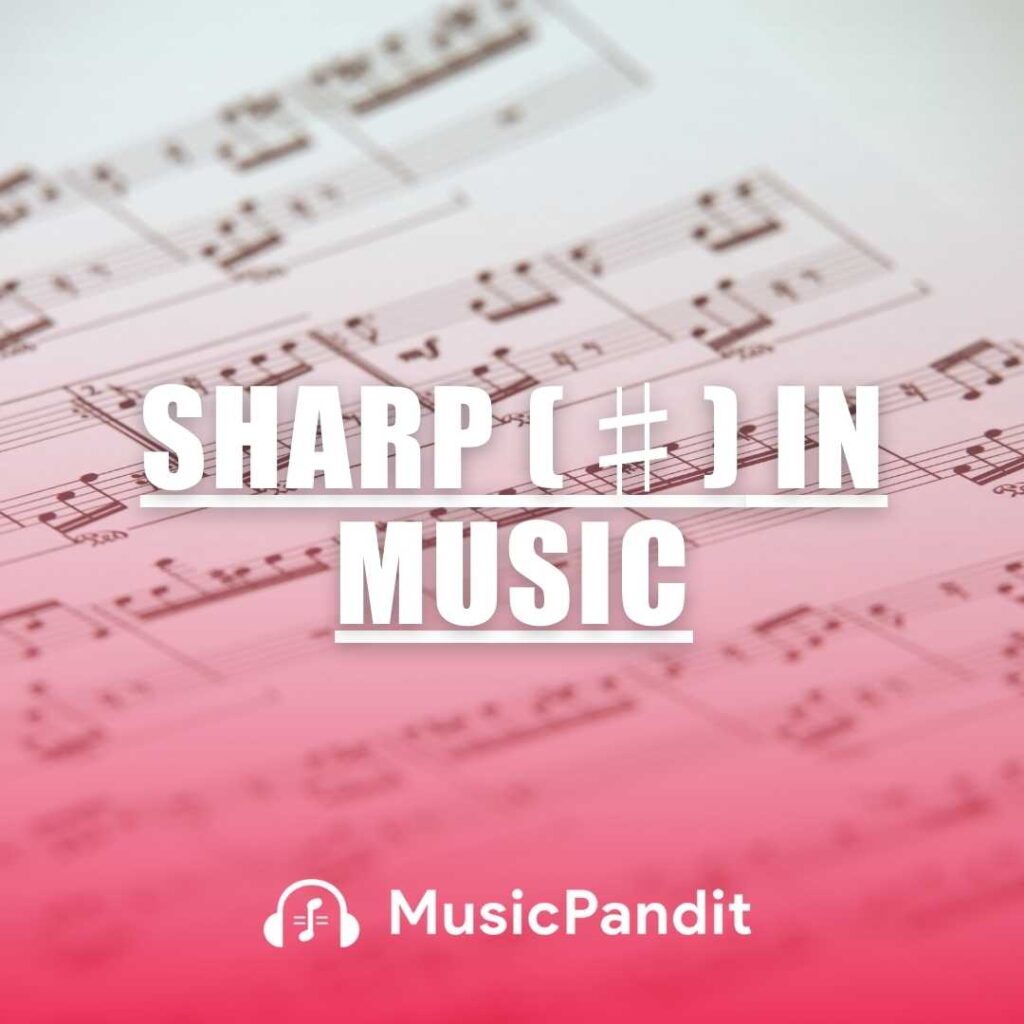In music, symbols and notations guide musicians in interpreting and performing compositions accurately. One such essential symbol is the sharp (♯). This article delves into the concept of the sharp in music, providing young music students with a comprehensive understanding of its definition, usage, importance, and application across various instruments.
What Is Sharp in Music?
A sharp is a musical symbol (♯) that indicates a note should be raised by one semitone, or half step. In simpler terms, when a note is “sharped,” it is played slightly higher in pitch than its natural counterpart. For example, if you see an F♯, it means you should play the note that is one semitone higher than F.
Visual Representation of the Sharp Symbol
The sharp symbol (♯) resembles a tilted hashtag or pound sign. In written music, it is placed directly before the note it modifies on the staff. For instance, if a composer wants a G note to be played as G♯, the sharp symbol will appear before the G note on the musical staff.
Importance of Sharps in Music
Sharps play a crucial role in music for several reasons:
- Expanding Musical Range: By introducing sharps, musicians can access the notes between the natural pitches, allowing for a broader range of musical expression.
- Defining Key Signatures: Many musical pieces are written in keys that include sharps. Understanding sharps is essential for identifying and playing in these keys correctly.
- Enhancing Musical Expression: Sharps contribute to the creation of various moods and emotions in music by allowing composers to explore different scales and tonalities.
How to Identify Sharp Notes
In sheet music, a sharp symbol placed before a note indicates that the note should be played a semitone higher. Additionally, key signatures at the beginning of a staff can contain sharps, affecting all notes of the same letter name throughout the piece unless otherwise indicated by a natural sign (♮).
Playing Sharp Notes on Different Instruments
Piano
On the piano, each key represents a specific note. The white keys are the natural notes (A, B, C, D, E, F, G), and the black keys are the sharps and flats. To play a sharp note, you move to the immediate black key to the right of the corresponding natural note. For example, to play F♯, you press the black key immediately to the right of the F key.
Guitar
On the guitar, each fret represents a semitone. To play a sharp note, move one fret higher (toward the body of the guitar) from the natural note. For instance, if you place your finger on the 2nd fret of the D string, you’re playing an E note. Moving to the 3rd fret will give you an F note, and the 4th fret will be F♯.
Wind Instruments (e.g., Clarinet, Flute)
Wind instruments require specific fingerings to produce sharp notes. Each instrument has a fingering chart that shows how to play each note, including sharps. It’s essential to consult your instrument’s fingering chart and practice the fingerings to become comfortable playing sharp notes.
Enharmonic Equivalents
In music, some notes sound the same but are written differently; these are called enharmonic equivalents. For example, F♯ and G♭ are played using the same key on the piano but are notated differently depending on the musical context. Understanding enharmonic equivalents is important for reading music accurately and for theoretical knowledge.
Key Signatures Involving Sharps
Key signatures are a set of sharp or flat symbols placed at the beginning of a staff, indicating the key of the piece. Each key signature corresponds to a specific scale and set of sharps or flats. For example, the key of G major has one sharp (F♯), while the key of D major has two sharps (F♯ and C♯). Learning key signatures helps musicians understand which notes are consistently sharped or flatted throughout a piece.
Practical Tips for Learning Sharps
Memorize the Order of Sharps: The order of sharps in key signatures follows a specific sequence: F♯, C♯, G♯, D♯, A♯, E♯, B♯. Remembering this order can assist in quickly identifying key signatures.
Practice Scales: Regularly practicing scales that include sharps will help you become more familiar with their fingerings and sounds.
Use Mnemonics: Create mnemonic devices to remember the order of sharps. For example, “Father Charles Goes Down And Ends Battle” corresponds to F♯, C♯, G♯, D♯, A♯, E♯, B♯.
Consult Fingering Charts: For wind and string instruments, use fingering charts to learn the correct finger positions for sharp notes.
Conclusion
Understanding and mastering sharps in music is fundamental for any budding musician. Sharps expand the musical landscape, allowing for greater expression and versatility. By familiarizing yourself with sharp notes, their notation, and their application across various instruments, you’ll be well-equipped to tackle a wide range of musical pieces and enhance your overall musicianship.
Source:https://www.musicpandit.com/resources/articles/sharp/

